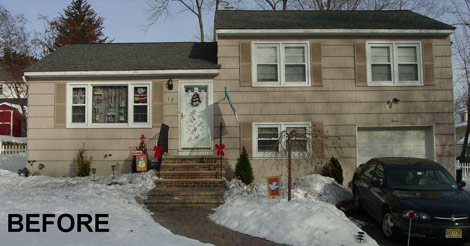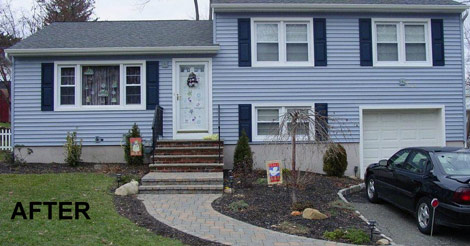Whether you’re looking to boost curb appeal, update your home’s look, improve your home’s value, or reduce or eliminate costly maintenance measures, re-siding your home is one of the most effective ways to accomplish all this and more. If you are considering re-siding your house, chances are it’s been awhile since you explored the available siding options. The market has expanded and changed dramatically since the days when wooden clapboards and shingles were your only choices for house siding. Technological improvements and design enhancements have produced new generations of siding materials that offer a wealth of benefits for a variety of applications. We explore your options below:

- Vinyl Siding: While it’s true that vinyl has been around for a while, manufacturers have continuously improved their vinyl-siding products to increase durability, resist fading, and reduce maintenance requirements. Because it’s affordable and easy to install, it’s the house-siding product of choice for the majority of homeowners. Vinyl is offered in a huge array of colors, styles, profiles, and finishes, and can be installed with a foam backing that wards off warping and offers increased insulation against heat and cold. A low-maintenance option, vinyl siding never needs painting and usually only needs to be hosed off once a year or so to keep it looking clean and new. Though vinyl siding is very durable and can last for up to 100 years, it’s easy to repair or replace sections of vinyl house siding if needed.
- Fiber-Cement Siding: Though not exactly a new entrant in the home-improvement arena, this siding material, made from a mix of wood pulp and cement, seems to be gaining in popularity. Fiber-cement siding has been around for about 25 years, and despite that it costs more than vinyl, it’s a popular choice for several reasons. First off, it’s got an aesthetically pleasing appearance, with the ability to mimic the look of just about any kind of siding, including wood shingles or clapboards and even stone or brick. Fiber-cement siding requires minimal upkeep, is extremely durable, and is not affected by extreme temperatures. Unlike wood, it’s rot- and termite-proof and should last for a lifetime. Fiber-cement board is available in a variety of colors, but unlike vinyl, it can be repainted if you decide to change the look of your home. Here at G.J. Keller, we are James Hardie-certified installers. James Hardie siding is the most trusted and recognized name in fiber-cement siding.
- Wood Siding: Wood siding is still a popular choice with some homeowners seeking a traditional look. Available, in shingles, shakes, and clapboards, wood siding can be durable and long-lasting if it’s well maintained. Wood must be painted or stained regularly, though this can also be of benefit to homeowners who like to update the look of their homes often. Unlike other options, wood is susceptible to insect, fire, and rodent damage, so extra vigilance and care is required. Wood siding is more expensive than vinyl, and ongoing maintenance costs must be considered as part of the overall investment. Wood can be an appropriate choice for period-style homes, bungalows, and cottages.
- Aluminum Siding: This siding option is a sleek, low-maintenance, affordable choice for homeowners. It comes in a variety of styles, including vertical panels and horizontal clapboards. It’s very durable, but prone to denting and can be noisy. It also requires more frequent repainting than other siding options. Aluminum siding, which can last up to 35 years and also offers good heat resistance, may be good choice for homeowners seeking durability and affordability.

There are many choices and options to consider when it comes to siding materials, but luckily, you don’t have to go it alone. Contact the experts at G.J. Keller, and we’ll assess your home, then offer customized recommendations that meet your needs and budget. Give us a call today at 973-927-0963!
